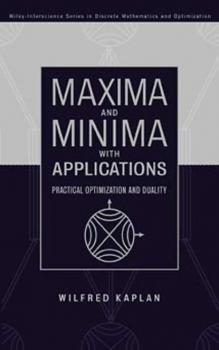Группа авторов
Список книг автора Группа авторовIntroduction to Statistical Time Series
The subject of time series is of considerable interest, especially among researchers in econometrics, engineering, and the natural sciences. As part of the prestigious Wiley Series in Probability and Statistics, this book provides a lucid introduction to the field and, in this new Second Edition, covers the important advances of recent years, including nonstationary models, nonlinear estimation, multivariate models, state space representations, and empirical model identification. New sections have also been added on the Wold decomposition, partial autocorrelation, long memory processes, and the Kalman filter. Major topics include: * Moving average and autoregressive processes * Introduction to Fourier analysis * Spectral theory and filtering * Large sample theory * Estimation of the mean and autocorrelations * Estimation of the spectrum * Parameter estimation * Regression, trend, and seasonality * Unit root and explosive time series To accommodate a wide variety of readers, review material, especially on elementary results in Fourier analysis, large sample statistics, and difference equations, has been included.
Bayesian Models for Categorical Data
The use of Bayesian methods for the analysis of data has grown substantially in areas as diverse as applied statistics, psychology, economics and medical science. Bayesian Methods for Categorical Data sets out to demystify modern Bayesian methods, making them accessible to students and researchers alike. Emphasizing the use of statistical computing and applied data analysis, this book provides a comprehensive introduction to Bayesian methods of categorical outcomes. * Reviews recent Bayesian methodology for categorical outcomes (binary, count and multinomial data). * Considers missing data models techniques and non-standard models (ZIP and negative binomial). * Evaluates time series and spatio-temporal models for discrete data. * Features discussion of univariate and multivariate techniques. * Provides a set of downloadable worked examples with documented WinBUGS code, available from an ftp site. The author's previous 2 bestselling titles provided a comprehensive introduction to the theory and application of Bayesian models. Bayesian Models for Categorical Data continues to build upon this foundation by developing their application to categorical, or discrete data – one of the most common types of data available. The author's clear and logical approach makes the book accessible to a wide range of students and practitioners, including those dealing with categorical data in medicine, sociology, psychology and epidemiology.
Computation for the Analysis of Designed Experiments
Addresses the statistical, mathematical, and computational aspects of the construction of packages and analysis of variance (ANOVA) programs. Includes a disk at the back of the book that contains all program codes in four languages, APL, BASIC, C, and FORTRAN. Presents illustrations of the dual space geometry for all designs, including confounded designs.
Structural Equations with Latent Variables
Analysis of Ordinal Categorical Data Alan Agresti Statistical Science Now has its first coordinated manual of methods for analyzing ordered categorical data. This book discusses specialized models that, unlike standard methods underlying nominal categorical data, efficiently use the information on ordering. It begins with an introduction to basic descriptive and inferential methods for categorical data, and then gives thorough coverage of the most current developments, such as loglinear and logit models for ordinal data. Special emphasis is placed on interpretation and application of methods and contains an integrated comparison of the available strategies for analyzing ordinal data. This is a case study work with illuminating examples taken from across the wide spectrum of ordinal categorical applications. 1984 (0 471-89055-3) 287 pp. Regression Diagnostics Identifying Influential Data and Sources of Collinearity David A. Belsley, Edwin Kuh and Roy E. Welsch This book provides the practicing statistician and econometrician with new tools for assessing the quality and reliability of regression estimates. Diagnostic techniques are developed that aid in the systematic location of data points that are either unusual or inordinately influential; measure the presence and intensity of collinear relations among the regression data and help to identify the variables involved in each; and pinpoint the estimated coefficients that are potentially most adversely affected. The primary emphasis of these contributions is on diagnostics, but suggestions for remedial action are given and illustrated. 1980 (0 471-05856-4) 292 pp. Applied Regression Analysis Second Edition Norman Draper and Harry Smith Featuring a significant expansion of material reflecting recent advances, here is a complete and up-to-date introduction to the fundamentals of regression analysis, focusing on understanding the latest concepts and applications of these methods. The authors thoroughly explore the fitting and checking of both linear and nonlinear regression models, using small or large data sets and pocket or high-speed computing equipment. Features added to this Second Edition include the practical implications of linear regression; the Durbin-Watson test for serial correlation; families of transformations; inverse, ridge, latent root and robust regression; and nonlinear growth models. Includes many new exercises and worked examples. 1981 (0 471-02995-5) 709 pp.
Forecasting with Dynamic Regression Models
One of the most widely used tools in statistical forecasting, single equation regression models is examined here. A companion to the author's earlier work, Forecasting with Univariate Box-Jenkins Models: Concepts and Cases, the present text pulls together recent time series ideas and gives special attention to possible intertemporal patterns, distributed lag responses of output to input series and the auto correlation patterns of regression disturbance. It also includes six case studies.
Statistical Models and Methods for Lifetime Data
Praise for the First Edition «An indispensable addition to any serious collection on lifetime data analysis and . . . a valuable contribution to the statistical literature. Highly recommended . . .» -Choice «This is an important book, which will appeal to statisticians working on survival analysis problems.» -Biometrics «A thorough, unified treatment of statistical models and methods used in the analysis of lifetime data . . . this is a highly competent and agreeable statistical textbook.» -Statistics in Medicine The statistical analysis of lifetime or response time data is a key tool in engineering, medicine, and many other scientific and technological areas. This book provides a unified treatment of the models and statistical methods used to analyze lifetime data. Equally useful as a reference for individuals interested in the analysis of lifetime data and as a text for advanced students, Statistical Models and Methods for Lifetime Data, Second Edition provides broad coverage of the area without concentrating on any single field of application. Extensive illustrations and examples drawn from engineering and the biomedical sciences provide readers with a clear understanding of key concepts. New and expanded coverage in this edition includes: * Observation schemes for lifetime data * Multiple failure modes * Counting process-martingale tools * Both special lifetime data and general optimization software * Mixture models * Treatment of interval-censored and truncated data * Multivariate lifetimes and event history models * Resampling and simulation methodology
Design and Analysis of Clinical Experiments
First published in 1986, this unique reference to clinical experimentation remains just as relevant today. Focusing on the principles of design and analysis of studies on human subjects, this book utilizes and integrates both modern and classical designs. Coverage is limited to experimental comparisons of treatments, or in other words, clinical studies in which treatments are assigned to subjects at random.
Maxima and Minima with Applications
This new work by Wilfred Kaplan, the distinguished author of influential mathematics and engineering texts, is destined to become a classic. Timely, concise, and content-driven, it provides an intermediate-level treatment of maxima, minima, and optimization. Assuming only a background in calculus and some linear algebra, Professor Kaplan presents topics in order of difficulty. In four short chapters, he describes basic concepts and geometric aspects of maxima and minima, progresses to problems with side conditions, introduces optimization and programming, and concludes with an in-depth discussion of research topics involving the duality theorems of Fenchel and Rockafellar. Throughout the text, the subject of convexity is gradually developed-from its theoretical underpinnings to problems, and finally, to its role in applications. Other features include: * A strong emphasis on practical applications of maxima and minima * An impressive array of supporting topics such as numerical analysis * An ample number of examples and problems * More than 60 illustrations highlighting the text * Algorithms to reinforce concepts * An appendix reviewing the prerequisite linear algebra Maxima and Minima with Applications is an ideal text for upper-undergraduate and graduate students taking courses in operations research, management, general engineering, and applied mathematics. It can also be used to supplement courses on linear and nonlinear optimization. This volume's broad scope makes it an excellent reference for professionals wishing to learn more about cutting-edge topics in optimization and mathematical programming.
A Manager's Guide to the Design and Conduct of Clinical Trials
This newly updated edition of the benchmark guide to computer-assisted clinical trials provides a comprehensive primer for prospective managers. It covers every critical issue of the design and conduct of clinical trials, including study design, organization, regulatory agency liaison, data collection and analysis, as well as recruitment, software, monitoring, and reporting. Keeping the same user-friendly format as the original, this Second Edition features new examples and the latest developments in regulatory guidelines, such as e-submission procedures and computerized direct data acquisition. The new edition also reflects the increasing globalization of clinical trial activities, and includes new information about international standards and procedures, including the Common Technical Document and CDISC standards. This step-by-step guide is supported by handy checklists and extracts from submitted protocols. Experienced author and consultant Phillip Good incorporateshumorous yet instructive anecdotes to illustrate common pitfalls. Based on the proven industrial formula of planning, implementing, and finally performing essential checks, the book's three sections-"Plan," «Do,» and «Check»-includethe following material: * Should the trials be conducted? * Put it in the computer and keep it there * Staffing for success * Designing trials and determining sample size * Budgeting * Recruiting and retaining patients and physicians * Data management * Monitoring the trials * Data analysis * After action review * Exception handling Executive and managerial professionals involved in the design and analysis of clinical experiments, along with clinical research associates, biostatisticians, and students in public health will find A Manager's Guide an indispensable resource. Praise for the First Edition: «. . . readable, informative and at times witty . . . never stops being concise and well written . . . a book worth a read . . .» -Statistics in Medicine «The book is very prescriptive and full of lists and tables with which to guide managers in making effective decisions in using computer-assisted clinical trials in pharmaceutical studies.» -Technometrics «This book is must-have reading for anyone in the business . . .» -Clinical Chemistry
Contemporary Bayesian Econometrics and Statistics
Tools to improve decision making in an imperfect world This publication provides readers with a thorough understanding of Bayesian analysis that is grounded in the theory of inference and optimal decision making. Contemporary Bayesian Econometrics and Statistics provides readers with state-of-the-art simulation methods and models that are used to solve complex real-world problems. Armed with a strong foundation in both theory and practical problem-solving tools, readers discover how to optimize decision making when faced with problems that involve limited or imperfect data. The book begins by examining the theoretical and mathematical foundations of Bayesian statistics to help readers understand how and why it is used in problem solving. The author then describes how modern simulation methods make Bayesian approaches practical using widely available mathematical applications software. In addition, the author details how models can be applied to specific problems, including: * Linear models and policy choices * Modeling with latent variables and missing data * Time series models and prediction * Comparison and evaluation of models The publication has been developed and fine- tuned through a decade of classroom experience, and readers will find the author's approach very engaging and accessible. There are nearly 200 examples and exercises to help readers see how effective use of Bayesian statistics enables them to make optimal decisions. MATLAB? and R computer programs are integrated throughout the book. An accompanying Web site provides readers with computer code for many examples and datasets. This publication is tailored for research professionals who use econometrics and similar statistical methods in their work. With its emphasis on practical problem solving and extensive use of examples and exercises, this is also an excellent textbook for graduate-level students in a broad range of fields, including economics, statistics, the social sciences, business, and public policy.









